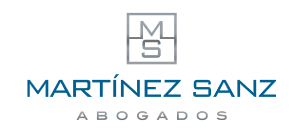The so-called Second Chance Law is a legal mechanism aimed at individuals and the self-employed who, being in a situation of insolvency, are seeking to obtain the constitutes a legal mechanism aimed at individuals and self-employed persons who, finding themselves in a situation of insolvency, seek the discharge of unpaid liabilities (EPI) provided for in the Consolidated Text of the Insolvency Law (TRLC)..
However, obtaining the exemption does not mean that the process simply ends there. There are legal and financial consequences that should be analysed in detail in order to understand what happens after the court ruling.
1. Scope of the exemption
The court decision granting PIT releases the debtor from being liable to creditors for those debts that could not be satisfied in the debtor's insolvency proceedings.
However, do not think that this is a simple procedure. First of all, it should be borne in mind that not all debtors are eligible for this exemption. Among others, those convicted of certain crimes, those who have been sanctioned for serious and very serious tax offences, or who have been subject to a procedure for the derivation of liability with public bodies, cannot benefit from this measure, unless they have satisfied this liability at the time of requesting the exoneration.
Moreover, even if you are eligible for exemption, it is important to know that not all debts are affected. The following are outside the perimeter of the exemption:
- Public law claims (with certain financial limits in the case of the Treasury and Social Security).
- Maintenance obligations arising from a court decision.
- Civil liability for tort, delict or tort-related debts.
- Debts secured by mortgage or pledge, which retain their enforceability on the property concerned, although there are certain possibilities of reducing the amount of the debt.
2. Immediate effects after the decision
Once the exoneration order has been signed:
- Enforcement proceedings and attachments associated with the exonerated debts cease, so that creditors will not be able to continue with them.
- The debtor must be removed from delinquency registers and financial databases, such as ASNEF or CIRBE.
- The ability to operate more normally in legal and commercial transactions is restored.
3. Subsequent obligations of the debtor
Obtaining the PID is conditional upon the principle of good faith. This implies:
- Do not conceal assets, income or relevant transfers.
- Report significant changes in wealth, such as inheritances or gifts, during the control period.
- Refrain from conduct that could be qualified as abuse of the mechanism, which would entitle creditors to request revocation of the waiver.
The time limit for exercising these revocation actions usually extends up to five years since the concession.
4. Future access to credit
Although legally the debtor is discharged from the debts, it is common practice in banking practice for financial institutions to assess the applicant's track record with caution.
Re-accessing credit is possible, but it is advisable:
- Wait a reasonable time to demonstrate solvency.
- Start with low-risk financial products before taking on new credit obligations.
- Avoid taking on commitments that could reproduce the previous insolvency situation.
5. Tax and property consequences
In certain cases, the exemption may generate tax effects as it is considered a capital gain. It is therefore essential to assess the impact on personal income tax and to obtain specialised tax advice.
In property matters, assets acquired after exoneration belong freely to the debtor. However, any concealment or unjustified increase could be challenged in court, to the extent that the exoneration could be revoked.
6. Particular cases
- Self-employedThe exemption allows them to continue their activity, although access to business finance may be conditional.
- EndorsersThe discharge of the principal debtor does not extinguish the guarantor's liability, unless the guarantor also avails himself of his own insolvency and second chance procedure (which is precisely one of the most common cases and for which the exoneration is best adapted).
- Main dwellingThe conservation will depend on the existence of the mortgage and the procedural strategy followed in the insolvency phase. The law allows it to be kept, but it will be necessary to offer creditors a five-year payment plan, which means that the definitive exoneration will take a little longer.
As can be seen, exemption is not a “suit” that fits all profiles. Thus, it is a very powerful tool for consumers who are heavily indebted to financial institutions, or for those persons (e.g. company directors) who have been obliged to guarantee or guarantee a company that has been declared bankrupt. It is of little use to those who owe a lot of debt to public bodies. It will be the specific details that will tell you whether or not it is appropriate in your case.
Consult your lawyer in exoneration of unsatisfied liability
At Martínez Sanz Lawyers We advise our clients both in the access to the Second Chance and in the subsequent stage, guaranteeing that their new economic situation is consolidated in a secure and stable manner.



